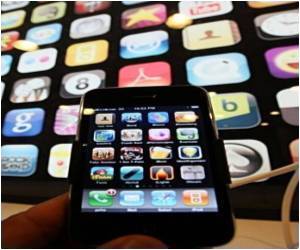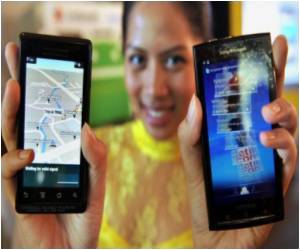Do you have a smartphone or tablet in your pocket or purse? If yes, you may be carrying the future of mobile medical monitoring technology.

Smartphones and tablet computers have an emerging role as mobile medical monitoring devices -- and may help to extend the use of pulse oximetry for monitoring blood oxygen levels to developing countries around the world, according to the article by Dr J. Mark Ansermino of University of British Columbia, Vancouver. He writes, ""The widespread adoption of mobile devices, even in low-resource settings, promises to make vital signs monitoring available anywhere and at low cost."
Smartphones May Extend Availability of Pulse Oximetry
Today's mobile devices "have the computing capability, display, and battery power to become powerful medical devices that measure vital signs and provide intelligent interpretation or immediate transmission of information," according to Dr Ansermino. He notes that of the nearly six billion mobile phone users worldwide, two-thirds live in developing countries and remote areas.
In particular, mobile devices could increase access to pulse oximetry: the familiar "finger clip" device used to monitor blood oxygen levels (arterial oxygen saturation) during anesthesia and surgery, as well as other medical procedures. In developed countries, pulse oximetry has become so widely used that it has been called the "fifth vital sign" -- added to body temperature, pulse rate, blood pressure, and respiratory rate.
But pulse oximetry is still not routinely available in many areas, because of the costs of purchasing, using, and maintaining the monitoring equipment. In those places, cell phones or tablet computers as monitors could provide an effective and economical approach to increasing the availability of blood oxygen measurement.
Advertisement
Some Mobile Monitoring Apps Available Now
Advertisement
For example, mobile monitoring could be an important tool in reducing deaths from pneumonia in children -- still a common event in many resource-poor countries. If mobile pulse oximeters were more widely available, declining blood oxygen levels could be detected more promptly, thus allowing faster intervention. Mobile pulse oximetry could also improve the ability to identify women at risk of developing pre-eclampsia -- a life-threatening complication of pregnancy and delivery.
In addition, modern smartphones and tablets also have the computing power to perform sophisticated analyses of the photophlethysmographic (PPG) data produced by pulse oximeters, potentially providing additional useful information. They could also be used to improve contact with health care providers, as an information resource to guide care, and as an educational tool for patients and health care providers.
"The widespread availability of pulse oximetry on mobile devices will realize the potential of pulse oximetry as both a monitoring and diagnostic tool in a wide range of clinical settings," Dr Ansermino concludes. With continued development of mobile monitoring technology, he foresees a day when "Oxygen saturation will truly become recognized as one of the vital signs."
Source-Eurekalert









